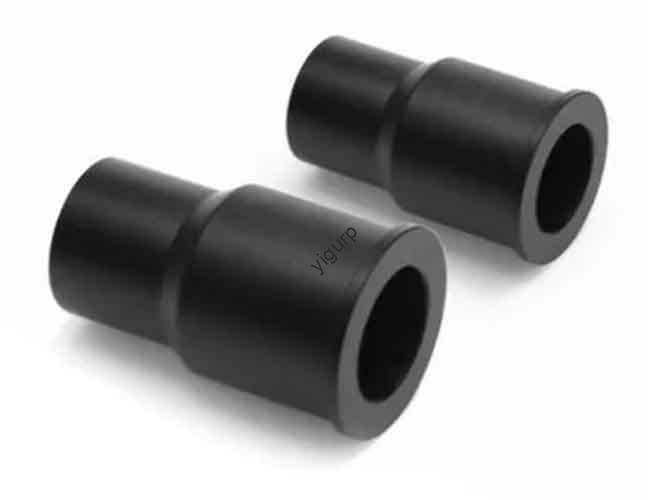Lors du développement d'un purificateur d'eau, la phase de prototype détermine directement si le produit final répond aux besoins des utilisateurs et aux normes de l'industrie. Parmi toutes les méthodes de fabrication de prototypes, Usinage CNC stands out for its precision and reliability—but why is it indispensable for water purifier prototypes? This article breaks down key aspects of CNC-machined water purifier prototypes, de la conception aux tests, to help you understand its value.
1. Core Design Principles for CNC-Machined Water Purifier Prototypes
A successful prototype starts with design optimization tailored to CNC capabilities. Below are three non-negotiable design focuses:
| Aspect conception | Exigences clés | Remarque sur la compatibilité CNC |
| Functional Design | – Smooth internal water flow channels (no dead ends).- Tight filter element interfaces (for PP cotton, RO membranes, etc.). | CNC’s high precision ensures channel dimensions match filter sizes exactly. |
| Structural Strength | – Uniform shell thickness (to resist 0.3–0.6MPa water pressure).- Reasonable support structures (Par exemple, stiffeners). | CNC simulates real-use pressure via consistent material removal. |
| Maintainability | – Modular parts (removable panels, easy filter access). | CNC enables precise cutting of assembly clearances (avoids loose/tight fits). |
2. What Advantages Does CNC Machining Offer for Water Purifier Prototypes?
Compared to 3D printing or manual machining, CNC machining provides unique benefits that directly improve prototype quality. Voici une comparaison côte à côte:
| Catégorie d'avantage | CNC Machining Performance | 3D Printing Limitation |
| Précision | Dimensional precision up to ± 0,05 mm (ideal for fine holes like water inlets). | Typical precision of ±0.1–0.3mm (risk of leaky joints). |
| Polyvalence | Processus des plastiques (Abs, acrylique), alliage en aluminium, et cuivre. | Limited to plastic filaments (poor for metal waterway tests). |
| Finition de surface | Supports post-treatment (pulvérisation, placage) for mass-production simulation. | Surface rugueuse (nécessite un ponçage supplémentaire; hard to replicate factory textures). |
3. Step-by-Step CNC Machining Process for Water Purifier Prototypes
CNC machining follows a linear, repeatable workflow to ensure consistency. The process is divided into 5 étapes clés:
- Model Splitting & Programmation
Split the 3D model into machinable parts (Par exemple, coquille, doublure, filter holder). Select tools (high-precision ball nose cutters for curves) and optimize parameters (rotational speed, taux d'alimentation) to reduce material deformation.
- Brouillage
Supprimer rapidement 90% en excès de matériau, laissant un 0.5–1mm allowance pour finir. This step saves time while protecting the final shape.
- Finition
Utiliser une faible avance, high-speed cutting to achieve a surface roughness of Ra0.8–Ra3.2—critical for smooth water flow and user comfort (pas de bords tranchants).
- Special Structure Treatment
- Threaded/mounting holes: Machined via spiral milling to prevent slippage.
- Surfaces courbes complexes: Achieved via 5-axis CNC for seamless waterway connections.
- Liaison & Assemblée
Use epoxy or instant adhesive to simulate mass-production methods (Par exemple, s'enclenche, vis), testing real-world assembly logic.
4. Material Selection Guide for CNC-Machined Prototypes
Choosing the right material directly impacts prototype performance. Below is a practical material-scenario match:
| Type de matériau | Applicable Prototype Parts | Caractéristiques clés |
| Plastique abs | Coquille, Panneau de contrôle | Easy to polish/plate; faible coût; mimics mass-produced plastics. |
| Acrylique Transparent | Réservoir d'eau, internal viewing window | Transparence élevée; allows observation of water flow. |
| Alliage en aluminium | Internal brackets, waterway joints | Léger, résistant à la corrosion; ideal for metal part testing. |
| Nylon | Filter element card slots | Self-lubricating, à l'usure; easy to test filter replacement. |
5. Post-traitement & Tests fonctionnels
A CNC prototype is only valid if it undergoes rigorous post-processing and testing to simulate real use.
Key Post-Treatments
- Broyage / polissage: Removes knife marks (critical for plastic shells’ feel).
- Nettoyage à ultrasons: Eliminates residual cutting fluid (prevents waterway contamination).
- Simulation Treatments:
- Pulvérisation (Par exemple, matte black/white) to replicate factory textures.
- Dépistage de la soie (logos, parameter labels) for user-friendliness.
- Placage (stainless steel luster) pour les pièces métalliques.
Must-Perform Tests
| Type de test | But | Critères de passage |
| Vérification de l'assemblage | Check filter installation, pipe docking, and button/display usability. | Smooth filter replacement; clear display view. |
| Water Flow Test | Verify waterway efficiency (use dye/flow meter) and leak resistance. | No leaks at 0.3–0.6MPa; uniform water flow. |
| Weathering Test | Simulate long-term use. | No plastic discoloration (UV test); no metal rust (corrosion test). |
6. Yigu Technology’s Perspective on CNC Machined Water Purifier Prototypes
À la technologie Yigu, we believe CNC machining is the cornerstone of reliable water purifier development. Contrairement à l'impression 3D, CNC’s ±0.05mm precision solves common prototype pain points—such as leaky waterways or loose filter slots—that could derail mass production. We often recommend clients prioritize CNC for core parts (coquille, waterway liners) while using 3D printing for non-critical components to balance cost and quality. Par exemple, a recent project using CNC-machined aluminum liners and ABS shells reduced pressure loss by 15% and cut filter replacement time in half. Finalement, CNC prototypes don’t just test design—they accelerate the path from concept to market.
FAQ
- How much does a CNC-machined water purifier prototype cost?
Le coût va de 500 à 3,000 Yuan par unité, depending on part complexity and material. To control costs, focus on machining key components (Par exemple, coquille) and use 3D printing for secondary parts.
- How long does it take to make a CNC-machined water purifier prototype?
Typically 5–15 days. For faster turnaround, split complex parts into smaller components and process them in parallel.
- L'usinage CNC peut-il simuler toutes les caractéristiques de production en série d'un purificateur d'eau?
Oui : la CNC prend en charge les post-traitements comme la pulvérisation, placage, et sérigraphie pour reproduire les finitions d'usine. Il teste également la logique d'assemblage (Par exemple, s'enclenche, vis) qui correspondent aux méthodes de production de masse.
